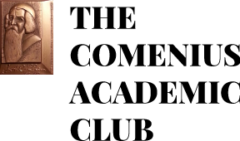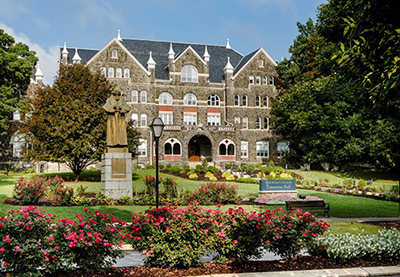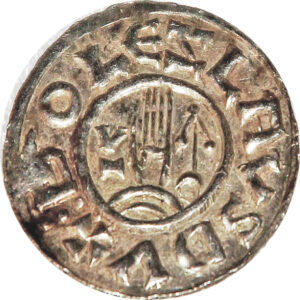Jiří Bičák (obituary)
Comenius member Jiří Bičák, a prominent Czech astrophysicist and expert on the general theory of relativity, passed away on 26 January 2024. Among his numerous pastimes was conducting research on the life of Albert Einstein. His lecture at the 2019 Comenius Academic Club gathering in New Brunswick was well-received, and Bičák was delighted to see Einstein’s house in Princeton during our excursion there. The last opportunity we had to meet with Professor Bičák was at the Prague preparatory meeting of the Comenius Academic Club in October 2023. As usual, he was filled with optimism, energy, and humor. He will be missed. RIP!
Jaromír Šlápota (obituary)
With great sadness, we need to inform Comenius members of the passing of longtime Comenius Academic Club supporter, Jaromír Šlápota, on 2 April 2024. Jaromír had served for decades as Director of the Czechoslovak Foreign Institute in Prague, which supported the publication of the Comenius journal and several Comenius Academic Club meetings. Our preparatory meetings in Prague were hosted by the Czechoslovak Foreign Institute for years at his gracious invitation. The Comenius Academic Club fondly remembers Jaromír and his contribution to our activities.
THE MINISTER OF EDUCATION, PROF. VLADIMÍR BALAS, HAS TERMINATED NATIONAL CELEBRATIONS OF JAN AMOS COMENIUS’ ANNIVERSARIES
On Tuesday 15 November 2022 National celebrations of Jan Amos Comenius’ anniversaries were officially closed in the concert hall of the Prague Conservatory. The young generation of musicians accompanied the celebrations with their performance, which commemorated the 350th anniversary of the death (15 November 2020) and the 430th anniversary of the birth (28 March 2022) of the pedagogue, theologian, philosopher, humanist and teacher J. A. Comenius. The three-year period of national and international conferences and seminars organised by major scientific and cultural institutions, as well as activities for the general public, children and young people, has shown how timeless is the legacy of the work and ideas of J. A. Comenius. On the threshold of the modern age, he emphasised themes that are still unprecedentedly topical in today’s post-modern globalised society: the availability and importance of modern education, social reform of society, political cooperation in Europe and the world, and especially the value of tolerance and openness towards other people, culture and religion as a way of preventing conflicts (not only war).
At the beginning, the guests listened to Comenius‘ thoughts performed by the actor Alfred Strejcek. The evening was officially opened by the Minister of Education, Youth and Sports, Professor Vladimír Balaš. Afterwards, Professor Jiří Drahoš, first Vice-Chairman of the Senate of the Czech Republic, and former Minister Professor Stanislav Štech, who actively participated in National celebrations of Jan Amos Comenius’ anniversaries, recalled the power of Comenius‘ ideas. Prof. Jindrich Vybiral spoke on behalf of the rectors, Prof. Tomáš Kasper who commemorated the 130th anniversary of the National Pedagogical Museum, and Drs. Jan Landsaat from Stichting Comenius Museum v Naardenu also took the floor about Comenius‘ legacy. The evening was also attended by the President of the Comenius Academic Club Prof. Karel Raska, Prof. Jana Rasková and other members of this organization.
The director of the National Pedagogical Museum and Library of J. A. Comenius, Dr. Marketa Pankova, whose institution was the main guarantor of the celebrations and the scientific or cultural events associated with them, then summarized the activities of the coordinating group of the National Comenius Celebrations and pointed out the importance of this extraordinary event, which in times of war rampage and trampling of human values recalls the „task“ that Comenius set for humanity – to solve social, cultural, social issues through education. During the evening, the winners of the children’s art competition Comenius in the classroom! were announced and prizes and honourable mentions were awarded to pupils who presented the legacy of Comenius in an original, enthusiastic and collaborative way. The event ended with a concert Tribute to Comenius, performed by the Prague Conservatoire. Excerpts from the most important works of Comenius were performed.
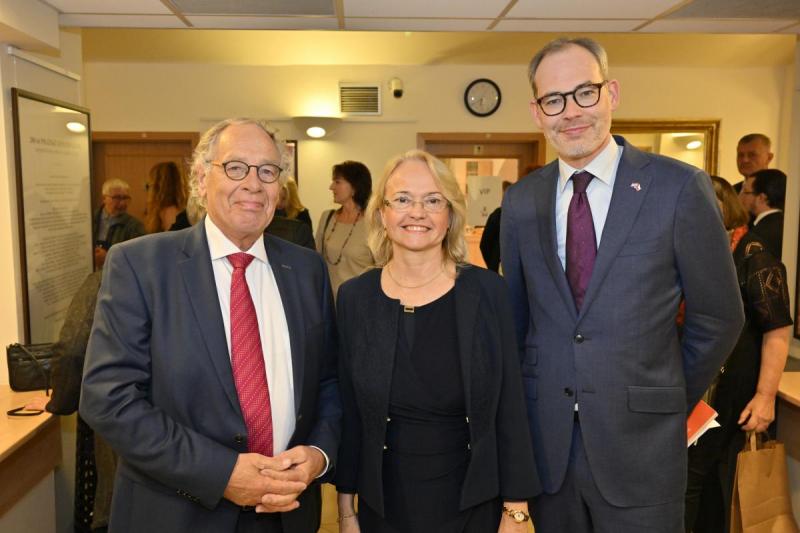
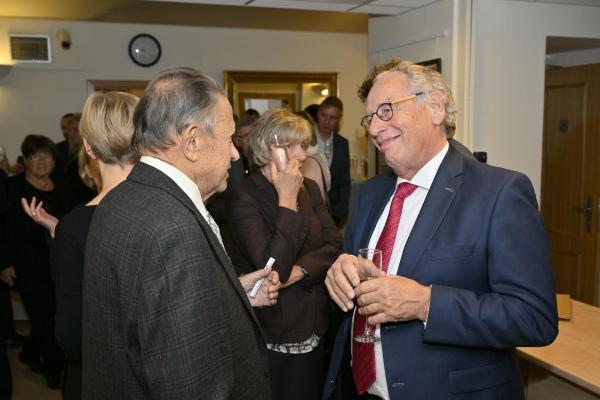
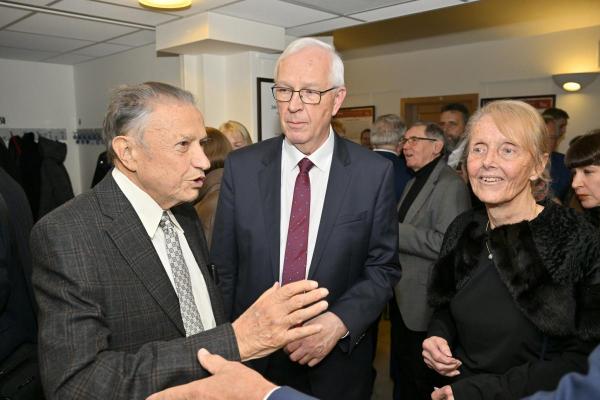

MOJMIR PETRAN = R.I.P.
On August 13,2022 we lost a prominent member of the Comenius Academic Club, Professor Mojmir Petran. We first met in 1960 at the Medical Student Research Conference in Plzen. In 1966 we spent several months as fellows at Yale University in New Haven.At that time we drove around North America in an old and rusty Chevrolet. This trip of four Czech physicians and a small cat would be worth a short novel…
Petran was, during the WW Ii an active member of antinazi resistance , then finished Medical School at Charles University and worked as a researcher, becoming ultimately a Chair at the Department of Biophysics ant the Medical School in Plzen.
His most important contribution has been the development, together with Milan Hadravsky, of the confocal microscope. This work, in opinion of many ,was worth a Nobel Prize.
We remained in regular contact even when we were separated by the Arlantic anfter 1968.
Mojmir was a charter and active member of the Comenius Academic Club and recipient was numerous recognitions and awards. At Comenius, we remember his lecture in the symposium.
Fateful Eights in Litomysl.
Dear Mojmir, we miss you. Rest in Peace.
Karel Raska,Jr.
FATEFUL EIGHTS: RECOLLECTIONS OF THE CZECHOSLOVAK TWENTIETH CENTURY
The creation and publication of this book has been made possible by the project of the Ministry of Education, Youth and Sports of the Czech Republic Czechoslovakia and Its Cultural Identity in the Historical Memory of the 20th and 21st Centuries (MRP 180001). The reflection of the fateful “eights” in the Czech history of the 20th century in the personal memories of prominent figures of the Czech domestic and exile scientific and journalistic community was one of the thematic blocks of the 6th Annual Conference of the Czech-American scientific society Comenius Academic Club, which took place on June 8–10 2018 in Litomyšl.
CONTENTS
I. Introduction
II. Memoirs
On the other side of the Wall by Štěpán Benda
From Prague to the West and Back by Peter Brod
Game Changers at Crossroads by Juraj Ivanyi
A Few Memories of the Second World War and the Last Century in General by Mojmír Petráň
Turning Points by Karel Raška
III. Interviews
Swedish Episodes by Cyrill John
“The Past in the Present” by Antonín J. Liehm
EXHIBITION J.A. COMENIUS: EDUCATION FOR ALL IN BETHLEHEM, PENNSYLVANIA
In March 2017 celebrations took place in the town of Bethlehem, Pennsylvania, marking the 275th anniversary of the founding of the Moravian College, and at the same time of the town itself, the centre of which this school has become.
LINK Exhibition J.A. Comenius: Education for All in Bethlehem, Pennsylvania
LINK Výstava J. A. Comenius: Education for All v Bethlehemu v Pensylvánii
THE COMENIUS ACADEMIC CLUB AND THE “DISCOVERY OF THE CENTURY” IN PARDUBICE-THE TREASURE OF CZECH COINS HIDDEN 1000 YEARS AGO
One of the activities undertaken in the early days of the Comenius Academic Club was the exhibition “Millennial Heritage of Czech Currency” prepared by the East Bohemian Museum in Pardubice in collaboration with the University of Pardubice. On Friday, June 28, 2013, a viewing of this exhibition took place at the Bohemian National Hall in New York on the eve of the first scientific conference of the Comenius Academic Club. The preparation of this exhibition, which in the autumn months of 2013 traveled from New York to La Grange, Texas, where it was presented by the Texas Czech Heritage and Cultural Center, required much effort and financial expenditure associated with its transportation between continents and on-site installation. The exhibition attracted the attention of visitors in New York and Texas, as well as of the Czech media. Apparently, interest was also sparked elsewhere. Perhaps it is merely a coincidence, but who knows.
Denar of Czech Prince Boleslav II from the discovery in Pardubice
The Comenius Academic Club provided the East Bohemian Museum with the opportunity to present the thousand-year heritage of Czech money in distant New York, which is the current center of big money. The museum undertook its task with honor. Is it a mere coincidence that two years later, in the final months of 2015, the museum received a completely unexpected reward, namely the real millennial heritage of Czech money concealed for 1,000 years in a secret underground hiding place? Shortly before the 2015 Christmas holidays, the legitimate finder (who wishes to remain anonymous and will receive a generous financial reward for his discovery), presented the museum with an extraordinary coin discovery found on the territory of the Pardubice region (the precise location is known, but will not be disclosed until systematic archaeological research in the area is undertaken). The find comes from part of a container from the Middle Ages containing more than 400 silver coins (denars) from the end of the tenth century. These coins, protected by the ceramic container have been preserved in virtually their original condition and, due to the fact that they made of pure silver, have not been damaged by oxidation. In fact, the coins look as if one of our ancient ancestors brought them from the duke’s mint in Prague or Vyšehrad. Several hundred other coins that escaped the cracked container over the past thousand years are damaged, but most are easily identifiable. Most of the coins in question were minted by Duke Boleslav II (the nephew of St. Wenceslas), who governed the Czech Duchy from the late 60s/early 70s of the 10th century until his death on 7 February 999.
Meeting concerning the coin discovery at East Bohemian Museum in Pardubice: Museum Director Tomáš Libánek, Curator of the Numismatic Collection Petr Vorel (CAC member), Governor of the Pardubice Region Martin Netolický.
This preserved find represents an extraordinary collection of the oldest Czech coins. Its historical value is priceless. In expert circles, there is talk of the find of the century because, until now, there has never been such an extensive, well-preserved collection of Czech coins available, issued by our dukes 1000 years ago. At that time, the Czech Duchy represented not only an influential political entity within the framework of a gradually Christianizing Europe (thus mainly Christian motifs can be found on the oldest Czech coins), but also a significant economic center whose leaders had their own silver emanating from Czech sources at their disposal. The Pardubice “dinar treasure” found in 2015 serves as unique evidence of this.
Scientific analysis of this discovery will take several years. At least partial public access will be granted within the framework of the Czech version of the above-mentioned exhibition “Millennial Heritage of Czech Currency”, organized by the Comenius Academic Club in New York in 2013. Enriched by the new discovery, the East Bohemian Museum in Pardubice will organize this exhibition in the Parliament of the Czech Republic in early March 2016.
